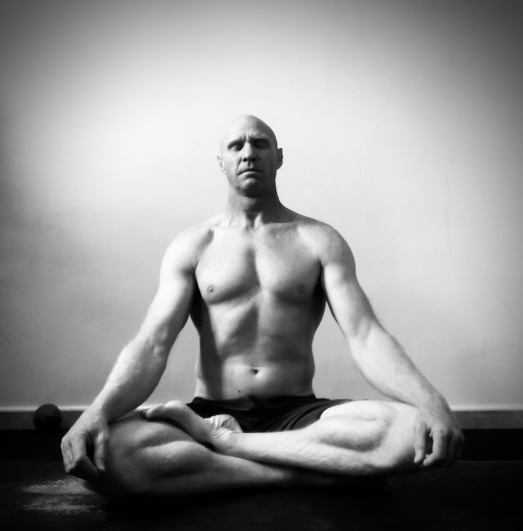
The Fine Art of Meditation?
Meditation
I’m relatively new to meditation, or to what I would class as actual meditation rather than just sitting listening to my thoughts and wondering if I should just go and do something else.
Having tried, but not really benefitted from meditation for many years, I recently kind of fell into a regular practice by accident whilst sitting in comfortable contemplation at the end of my personal Yoga practices. This feeling of calm, kindness and of letting go of my thoughts at the end of the practice started to become a bigger part of my daily practice, until at some point, some days, this would become the actual focus and it slowly dawned on me that I was possibly actually practicing meditation.
Instead of trying to sit in stillness and silence with a brain racing to get on with something else, I found myself simply sitting in a state of acceptance, feeling stillness and silence in and around me, a feeling of contentment washing over me as the brain chatter slowed and faded away and some times disappeared.
Everyone has heard of meditation, it’s been around since before records began, you can buy (if that way inclined) statues of meditating happy buddah’s and Hindu goddesses for your garden, and come on, who wouldn’t want to experience a ‘Zen mind’ or be as joyful looking as the Dali Lama for a few hours each day?
Meditation is immediately associated with calm, with stillness, wellness and with peace. The theory goes that if we all meditated for a period of time each day, we’d all be calmer, more understanding, more appreciative, connected and the World would be a better and brighter place.
Sounds a bit cultish maybe, but, come on, looking at the state of things right now, its got to be worth a try?
With over 80 billion neurons in the brain all firing electric responses at over 200mph to every sensation, thought, impulse and action we experience is it any wonder that we might feel overwhelmed every now and then and look for a moment of calm.
It is also said that 80% of our thoughts are actually pretty much just noise to us, repetitive, ponderings with little relevance or positive impact to our lives.
With all of this going on, doesn’t it sound like a good thing to be able to switch all of this off for a moment?
Is it also any wonder that when we do try to sit in silence, focus on the breath and chillout, all we can hear are our thoughts, now even busier and louder than ever, our neurons searching for stimulation and asking us what the f*k is going on, why we aren’t doing anything?
There’s this glorious idea that if we sit quietly in the lotus (meditation) position and just breathe slowly, we’ll be able to calm our thoughts and find this glorious quiet space inside ourselves. Sounds amazing right, but there’s a reason why so called ‘meditation masters’ practice meditation a ‘lot’ and do it early in the morning before anyone else is up. It is also interesting to learn that even those that ‘meditate’ often, still have to deal with brain chatter almost every session.
Here’s a look at my usual practice, as you can see I’m no ‘zen master’ but the process has started and even these sessions are teaching us the way…
Sit in the lotus style position associated with meditation (or similar) in a quiet comfortable space. Place hands over knees, lengthen upwards through the spine… tick, all good so far!
Soften the focus, relax shoulders and breathe in gently but deeply through the nose… Still good!
Relax and breathe out slowly and smoothly, slowing everything down… breathe in, count the breath in 1… Breathe out 1… Breathe in 2 … yeah this is going well… I’m feeling relaxed, this feels good, Breathe in 3… feel the breath, yeah that’s good, I can feel it, I can imagine it coming into my body, yeah filling my lungs, I feel my rib cage expand, should I hold it at the top of the breath? Maybe, or maybe just smooth it out, yeah smooth it out and now at the end of the exhale too maybe, yeah good, I’m really getting this, I’m feeling relaxed and maybe a little bit hungry? Yeah a little bit, after I’m finished I might get something to eat… hmm what do I fancy? Maybe a coffee first? Hmm the coffee shop down the road do great milkshakes in the summer, wonder what the surf’s doing, I should have a look at the tides… breath in, damn it where was I? Shit, reset… Breathe in 1… wonder if my wetsuits dry yet, where did I leave it?…
In a meditation session, its not uncommon for me to find myself talking to someone I’ve never met, somewhere I’ve never been, having a conversation about who knows what?…
Yeah, not quite the stillness of mind that I was going for originally.
This was my meditation on repeat for ever. More often than not it still is. In fact, the biggest difference is that this, recognition and acceptance of the chatter, is now an ‘accepted’ part of my ‘meditation’ experience.
Once accepted and recognized, the theory is that the chat can be dropped and the brain can chill out. This art of becoming aware of the brain chat, earlier and earlier in the response cycle and being able to quickly let it go, is a continuous part of meditation.
Popular belief is that meditation is all about zoning out and finding stillness, finding a state of nothingness and for it to be effortless, but then we have these 80 billion neurons that would like to say otherwise and are very much opposed to being stilled and we quickly realise, its not going to be as easy as we thought.
Our brain constantly responds to every sensation, it is part of our survival instinct, we’re programmed to be on high alert and never more so than when we’re sitting quietly in a vulnerable position.
Every sound we hear is processed and issued a mental or physical response. It is recognized, labelled, compared to similar sounds or experiences and a conclusion of what action must be taken is drawn. All this within the second that you first heard the sound and by now the sound has maybe changed and the active brain and central nervous system is running a diagnostic and coming up with a plan…
Now add our other senses to the process, vision, touch, smell, feel… each producing an assessment, label, comparison, action response of their own. The brain starts to chat, the sound draws the vision, we feel the head turn, we now see what is making the sound and we’re off…
Every millisecond of everyday, our brain is processing, analysing and responding to everything often before we’ve even had the chance to notice it happening.
So first, yeah maybe stilling some of that inner chat every now and then might not be a bad idea and second, with all of that going on all the time, we have to accept that finding the fabled stillness is not going to be easy.
So here’s how… here are my 5 essential tips for my meditation practice.
-
Environment/Planning
-
Time
-
Breathing
-
Awareness
-
Acceptance
-
Practice



